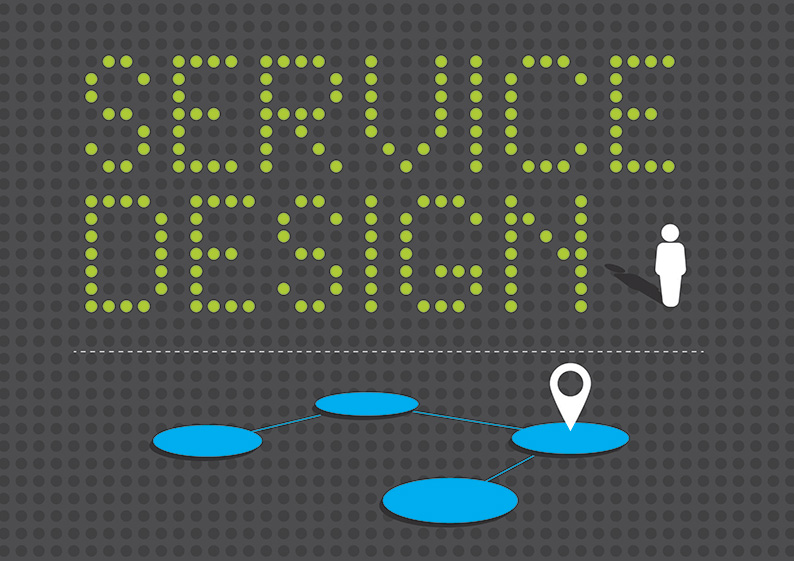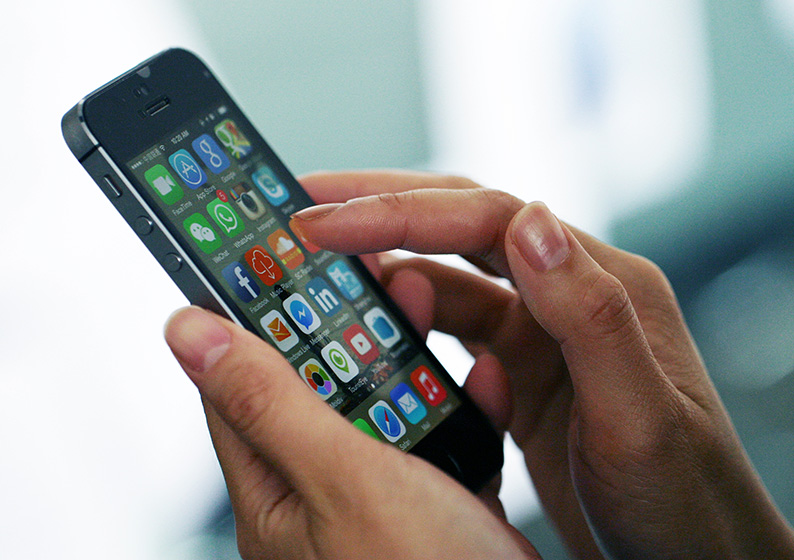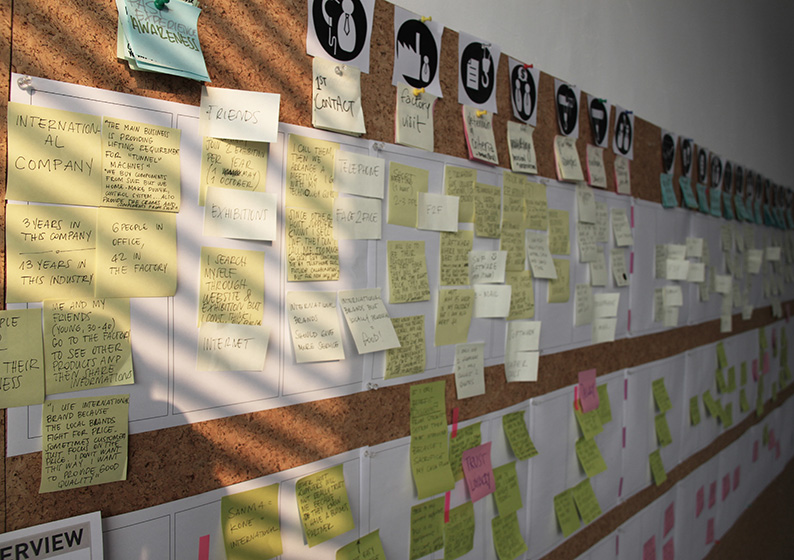WILD Think
Service Design is not about Apps
Dieser Artikel ist derzeit nur in englischer Sprache verfügbar.

Although Service Design is finally giving designers a higher level of responsibility, it is still hard to agree on what it is. And, after all, it’s always been there.
Hard to Define Service Design
Service Design is currently one the most discussed, evolving and cool topics in the design industry. Though everyone has an opinion about it, it seems everyone has a different understanding of what it is.
The global Service Design platform Service Design Network defines it as the“activity of planning and organizing people, infrastructure, communication and material components of a service in order to improve its quality and the interaction between service provider and customers”. After reading this definition, some might wonder what planning and organizing have to do with design and which skills are needed to be such a planner and organizer. What is clear though is that the designer plays a more significant role.
Indeed, one of the most important achievements of the Service Design debate is to finally recognize a higher level of responsibility for the designer. More than 40 years ago, the Italian design master Bruno Munari defined the designer using a very contemporary choice of words: the designer is a planner with an aesthetic sense, who works for the community (1971). What Munari meant is that a well-designed product can silently ease everyday life, foster new actions and affect one’s behaviour.The intangible contribution of designers to the community is now highlighted, and that’s great, but fact is that it is always difficult to define what’s not tangible.
In order to have a better understanding of what Service Design is, we will try to list some of the most unusual (yet common) interpretations we’ve come across in the last few months.

A Short List of Wrong Interpretations of Service Design
Service Design is about customers
Services are not about customers, they are about users. These users can be customers, participants, contributors, organizers, etc. Services are by definition complex, hybrid artifacts. They are made up of things – places and systems of communication and interaction – but also of human beings and their organizations (Meroni and Sangiorgi, 2011). These organizations can be aimed at improving a customer experience as much as defining a new business model or supporting social ideas. The way we conceive the word service is sometimes reductive and too market oriented. This might be one of the reasons why it’s difficult to define Service Design, and why consulting companies need to couple it with other expertise to make it clear towards their clients.
Whenever it is not product, graphic, fashion or interior design, then it’s service design
Service Design never stands alone, but is a multidisciplinary design practice that uses different expertise to achieve something bigger and ambitious. Changing people’s behavior through socially and environmentally sustainable solutions for example. As a natural evolution of our world economy, people are less and less looking for consumers’ goods, what they need is experience, access and interactions. Design is not changing its practice but is changing its purpose, and Service Design needs to compliment with other fields to meet its goals.
Service Designers are those who design apps
This point might be only a personal concern and refers to all the times we hear service designers mentioning apps as an example of what they do. To be fair everybody agrees that saying “I design apps” instead of “I design complex and hybrid artifacts” is more straight-forward in a conversation. Certainly, apps can be a valid example, but the simplicity of this description can be misleading since it doesn’t attribute enough to the research and work behind app development.

What is Service Design?
So what is Service Design, then? Our favourite definition of Service Design, as well as the most applicable one to the wide variety of projects that are labelled so, is: Service Design is the design practice that applies design thinking to make some behaviours more predictable than others; in order to do so, some user-centred tools of research and analysis have been developed to help designers in performing their role of understanding and facilitating the users.
Design thinking is innate, it’s a natural approach to problem solving that we apply in everyday life. Design thinking allowed us to create tools that became consumer goods after industrial production and technology.
These consumer goods are today harming our resources and for this reason design thinking had to look back at the real users’ needs to prioritise what is essential. Design industry has filtered out those products that have never been necessary (or sustainable) and in the process has developed a human-centred design approach where access and experience are much more desirable than products.
How does this translate for a brand? A Product Service System is the new thing on the market, it involves not only the product but puts a greater emphasis on the user experience related to it. How to build this user experience? Only your users can help you to understand it and designers to plan and organize it.

A New Role for the Designer
As a consequence to the new role of design, comes the new role of designers. The new designer has been defined as a facilitator (Meroni and Sangiorgi, 2011), which means someone who understands the users, hides among them and takes inspiration from them by letting them participate to the creative process. In other words the designer should give the users the tools to express their needs, elaborate them and find creative solutions. In some other words, designers just have to keep on doing their job. Just in a smarter way. After all, we already have 6 smartphones that all do the same thing.
This is the role we performed when our client Morris asked us to improve its user experience. Check the case study here.



